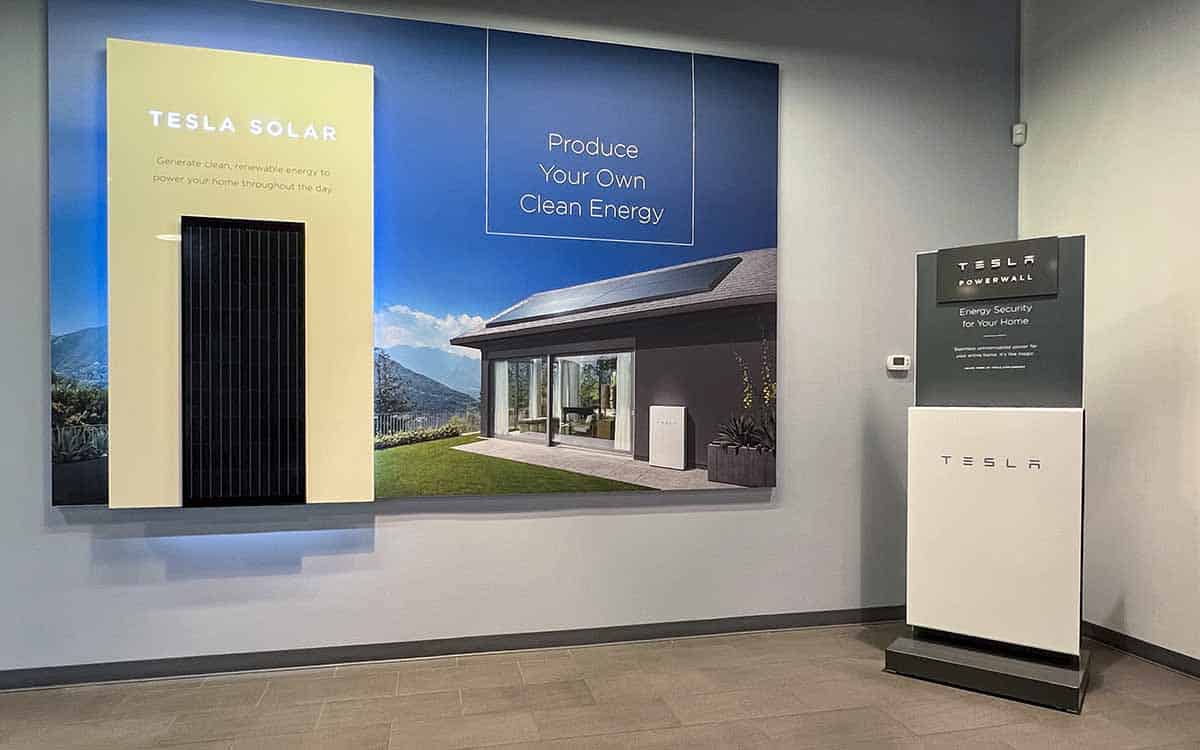Considering the rising energy costs and the glaring issues with the country’s electrical grid, many homeowners are trying to find alternative systems that can provide solar power and backup energy during an emergency. The most popular systems now are Generac PWRCell and Tesla Powerwall, which are similar but also have significant differences between them.
Tesla Powerwall is cheaper and coupled with AC power, which means that it can be paired with any inverter and is easier to install. Generac PWRCell is more expensive because it offers more maximum power and a higher overall capacity. Powerwalls are generally more popular than PWRCells.
In the rest of this article, I will discuss the similarities and differences between Generac PWRCell and Tesla Powerwall. I will cover everything you need to know about each system, including capacity, maximum power, and costs.

General Similarities Between Generac PWRCell and Tesla Powerwall
Before covering each system’s different aspects, I should also mention what these two power storage structures have in common. The first similarity is that they use the same principles to store energy for you to use at a later time. However, there are key differences in the way they work that I will discuss later.
Both PWRCell and Powerwall systems are paired with solar panels, but their design allows them to only work in homes tied to a grid. The energy they store is enough for a short amount of time, and neither can work in a completely off-grid home.
Additionally, both systems connect to a mobile app that you can download. These apps are similar, showing you statistics about the amount of energy stored and the one being used in your home. Mobile apps help you control the systems and receive important efficiency information, which helps establish energy goals for the future.
Generac PWRCell
Generac PWRCell is an energy storage system that allows you to store energy from your solar panels or your grid to use it during an emergency. This system is connected to sensors that help you monitor how much energy you save and how much you use.
Here are some significant aspects you need to keep in mind about Generac PWRCell.
Coupling Method
Generac PWRCell uses DC coupling. The energy from solar panels is generated as DC (direct current) electricity and afterward must be converted into AC (alternating current) to be used by your house appliances. The fact that PWRCell uses DC coupling means that the electricity generated by the solar panels and the storage has the same interconnection, so the power only needs to be inverted once.
As a result, this DC-coupled system is more efficient because it doesn’t require electricity to be inverted multiple times. However, this type of system is not compatible with every inverter and is generally more costly because the installation process is more difficult.
Size
The Generac PWRCell system consists of two main units: the inverter unit and the battery cabinet. The inverter is standard, with 24.5 x 19.25 x 8 inches (62.23 x 48.9 x 20.32 cm) dimensions. The battery cabinet size is also standard at 22 x 10 x 68 inches (55.88 x 25.4 x 172.72 cm), but its weight may vary, depending on the type of battery you choose.
Capacity
Capacity means the maximum amount of energy the system can store when it’s fully charged. In other words, the capacity will tell you how long you can keep the electricity running in your home when the grid doesn’t work, and you’re only connected to the battery storage.
Generac PWRCell offers anywhere between 8 and 18 kWh capacity, depending on the battery model. However, you cannot use up the whole capacity without damaging the battery. The Depth of Discharge of PWRCell is 84 percent, which means that after using 84 percent of the power, you need to recharge the battery.
Maximum Power
Maximum power in this context means the highest amount of continuous power the system can output at a time. Depending on the model, your Generac PWRCell can generate between 5 kW and 9 kW at a time, which is pretty great since it allows you to run several appliances or more powerful ones at the same time.
Battery
PWRCell can support up to six lithium battery modules in one cabinet. Each inverter can be attached to two battery compartments. Also, you can easily add battery modules if you need more continuous backup power for your appliances.
Warranty
The warranty offered by Generac PWRCell is 10 years for the battery cabinet. As for the battery modules, Generac covers 10 years or a certain amount of energy use, whichever comes first. The amount depends on the size of the battery you choose.
This warranty policy is not ideal because it does not mention anything about the capacity and condition of the battery throughout the 10 years. Moreover, your warranty may expire even sooner if you use the maximum amount of energy earlier than predicted.
Cost
The cost of a Generac PWRCell varies on the model you buy and the installation. The smallest model you can get costs around $10,000, but you can upgrade it for more. The typical Generac system can cost you closer to $20,000. Adding solar panels to the equation, you’ll be looking at around $45,000 for a regular battery storage system.
Some areas offer tax rebates to encourage energy-efficient homes. You can take advantage of these policies, which can give you up to 30 percent tax credit.
Tesla Powerwall
As mentioned above, Tesla Powerwall uses the same principle as Generac PWRCell: the battery system stores energy and ensures you have enough electricity during power outages or other issues. However, Powerwall is different from PWRCell in several ways.

Coupling Method
Unlike Generac, Tesla Powerwall uses AC coupling. As a result, the energy stored in the battery should be inverted three times to be used by appliances in your home. However, you don’t need to add a charge controller to your battery storage system.
The fact that the energy needs to be inverted a couple more times means that the process is more inefficient. However, there are a few added benefits to this coupling; for instance, AC coupling costs less, which is reflected in the price of the battery storage. Moreover, this type of coupling is compatible with all inverters and is easier to install.
Size
Tesla Powerwall only includes one larger unit instead of two smaller ones like Generac PWRCell. All units have the same size at 45.3 x 29.6 x 5.75 inches (115 x 75.2 x 14. 6 cm) and weigh approximately 251 pounds (113. 8 kg). The Powerwall weighs more than both units of the Generac.
Capacity
As mentioned above, capacity describes how long the battery can last without needing to recharge. Tesla Powerwall has a maximum capacity of 13.5 kWh, less than the Generac PWRCell.
However, the Powerwall has the added advantage of 100 percent depth of discharge, which means you can use the battery all the way to 0 percent without damaging the battery.
Maximum Power
When it comes to the maximum amount of power that the battery can output, Tesla Powerwall is behind Generac in a significant way. This system can output 5 kW at most, which is the minimum amount that PWRCell can generate. As a result, when you’re using the Powerwall, you may not be able to use powerful appliances like air conditioners.
Battery Type
Powerwall uses lithium-ion batteries. While it’s true that the maximum power of Powerwalls is significantly lower than the one of PWRCell, you can stack many Powerwalls together to create a much more powerful battery. Typically, you can stack six batteries together, but it’s possible to use up to 10 in particular cases.
Warranty
Tesla Powerwall offers 10 years of warranty, guaranteeing that the system will stay flawless throughout this time. This warranty also says that the battery will retain around 70 percent of its capacity in the first decade, which is an advantage compared to Generac.
There is no maximum energy use included in the warranty, so you can be sure that your warranty won’t expire before the 10-year period is over.
Cost
Tesla has the advantage regarding cost since it can set you back a smaller amount compared to Generac PWRCell. The unit itself costs about $7500, including all the necessary hardware. If we take into account the installation costs, a single battery unit would cost around $15,000. More units can cost approximately $30,000.
The tax rebates mentioned above apply to Tesla Powerwall, too, so you can take advantage of them to save money. Powerwalls are very popular because of the cost advantage.
Final Thoughts
Both Generac PWRCell and Tesla Powerwall are great options for energy storage. They allow you to store energy from solar panels or the grid to use in emergencies. However, neither of them can work off-grid. Both systems can be controlled and monitored through an app.
PWRCell is more expensive and provides more power and capacity, allowing you to use even more powerful appliances for potentially longer. On the other hand, Tesla costs less, offers a much better warranty, and enables you to use up the battery entirely without damaging it.
Read my in-depth comparison of the Enphase Encharge 10 Vs the Tesla Powerwall here.
- Tesla Charger Installation Cost (Home Setups) - March 1, 2024
- Tesla Phone Key Disconnected (Troubleshooting Guide and Quick Fixes) - March 1, 2024
- Tesla FSD 12 (Explained) - March 1, 2024